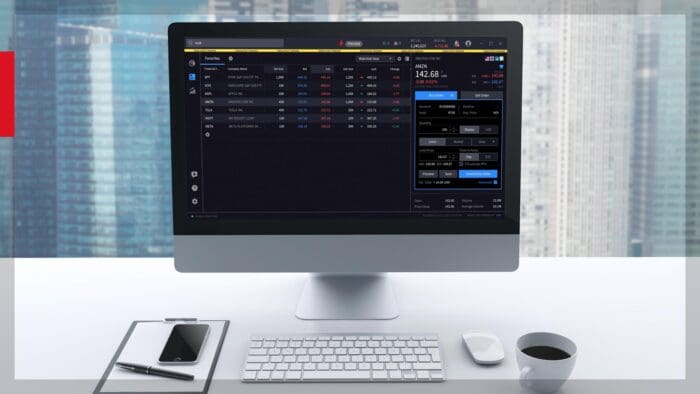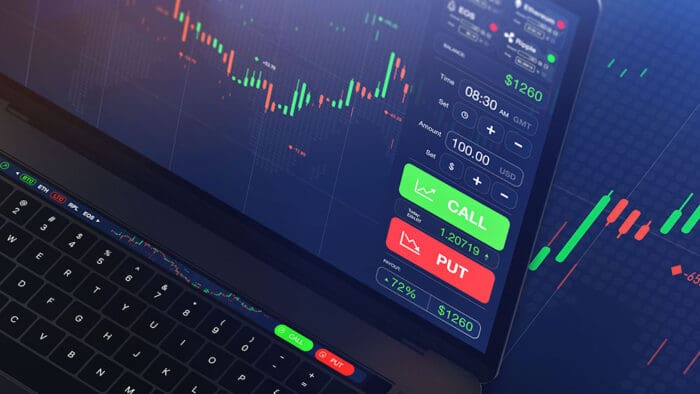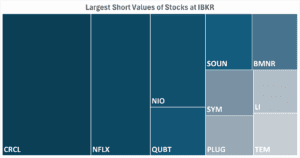We posited yesterday that the key to market sentiment wouldn’t be how the stock market opened, but how it looked when it closed. Let’s just say that market sentiment took a hit.
Thursday’s trade did not turn out as envisioned when NVIDIA (NVDA) was up close to 3.0% in pre-market action. That positive disposition didn’t last long. NVIDIA ended yesterday down 8.5%, and the broader market ultimately got pulled along for the ride. It was not a good close, which saw the major indices basically finish at their worst levels of the day.
Things are looking better this morning (comparatively speaking), but it’s a stretch to say they look good.
Currently, the S&P 500 futures are up 12 points and are trading 0.3% above fair value, the Nasdaq 100 futures are up four points and are trading 0.1% above fair value, and the Dow Jones Industrial Average futures are up 177 points and are trading 0.4% above fair value.
There isn’t a major buy-the-dip push in these readings, possibly because the buy-the-dip crowd has been burned of late and will hold their fire until the tape has more spark in it. Other factors include a mixed response to earnings reports from Dell (DELL), HP, Inc. (HPQ), NetApp (NTAP), Elastic (ESTC), and Autodesk (ADSK), and some mixed readings in this morning’s economic data.
The headliner was the January Personal Income and Spending report.
- Personal income increased a robust 0.9% month-over-month (Briefing.com consensus 0.3%), led by a 1.8% jump in personal current transfer receipts, following a 0.4% increase in December. Personal spending, however, declined 0.2% month-over-month (Briefing.com consensus 0.2%) following an upwardly revised 0.8% increase (from 0.7%) in December. The PCE Price Index was up 0.3% month-over-month, as expected, and up 2.5% year-over-year versus 2.6% in December. The core-PCE Price Index was up 0.3%, also as expected, and was up 2.6% year-over-year versus 2.9% in December.
- The key takeaway from the report isn’t singular. There are two: there was welcome disinflation on a year-over-year basis, yet there was a noticeable 0.5% month-over-month decline in real personal spending, which is going to be a big drag on Q1 GDP forecasts. Net-net, not a great report for the growth outlook considering, too, that the personal savings rate jumped to 4.6% from 3.5%.
- The January Adv. Intl. Trade in Goods Report showed a large widening in the deficit to $153.3 billion from a revised $122.0 billion (from -$122.1 billion) in December. Adv. Retail Inventories declined 0.1% month-over-month following a downwardly revised 0.5% decline (from -0.3%) in December. Adv. Wholesale Inventories increased 0.7% month-over-month following an upwardly revised 0.4% decline (from -0.5%) in December.
- The key takeaway from the report is the widening goods deficit. That was likely a byproduct of the tariff push as importers worked to get ahead of the tariffs, yet it will likely stoke President Trump’s push to get going with the tariff implementation.
The Treasury market has taken the data in stride, holding close to levels it was trading at just before the releases hit the wires. The 2-yr note yield is down four basis points to 4.04% and the 10-yr note yield is down four basis points to 4.25%.
The move in Treasuries this month has been ignited by safe-haven interest and festering concerns about growth that have been tied in part to the tariff proposals. That hasn’t shifted today, not with China saying it will enact “all necessary countermeasures” to protect its interests after President Trump announced Thursday that an additional 10% tariff will be placed on goods imported from China starting March 4 (when tariffs for Canada and Mexico also go into effect).
In the meantime, the real shift in the market that participants want to see is in the price action. That has been disappointing of late. It appears as if it could shift at the open, but of course that matters little relative to how the market looks when it closes.
—
Originally Posted February 28, 2025 – Looking for a shift in the price action
Disclosure: Interactive Brokers Third Party
Information posted on IBKR Campus that is provided by third-parties does NOT constitute a recommendation that you should contract for the services of that third party. Third-party participants who contribute to IBKR Campus are independent of Interactive Brokers and Interactive Brokers does not make any representations or warranties concerning the services offered, their past or future performance, or the accuracy of the information provided by the third party. Past performance is no guarantee of future results.
This material is from Briefing.com and is being posted with its permission. The views expressed in this material are solely those of the author and/or Briefing.com and Interactive Brokers is not endorsing or recommending any investment or trading discussed in the material. This material is not and should not be construed as an offer to buy or sell any security. It should not be construed as research or investment advice or a recommendation to buy, sell or hold any security or commodity. This material does not and is not intended to take into account the particular financial conditions, investment objectives or requirements of individual customers. Before acting on this material, you should consider whether it is suitable for your particular circumstances and, as necessary, seek professional advice.

















Join The Conversation
If you have a general question, it may already be covered in our FAQs page. go to: IBKR Ireland FAQs or IBKR U.K. FAQs. If you have an account-specific question or concern, please reach out to Client Services: IBKR Ireland or IBKR U.K..
Visit IBKR U.K. Open an IBKR U.K. Account